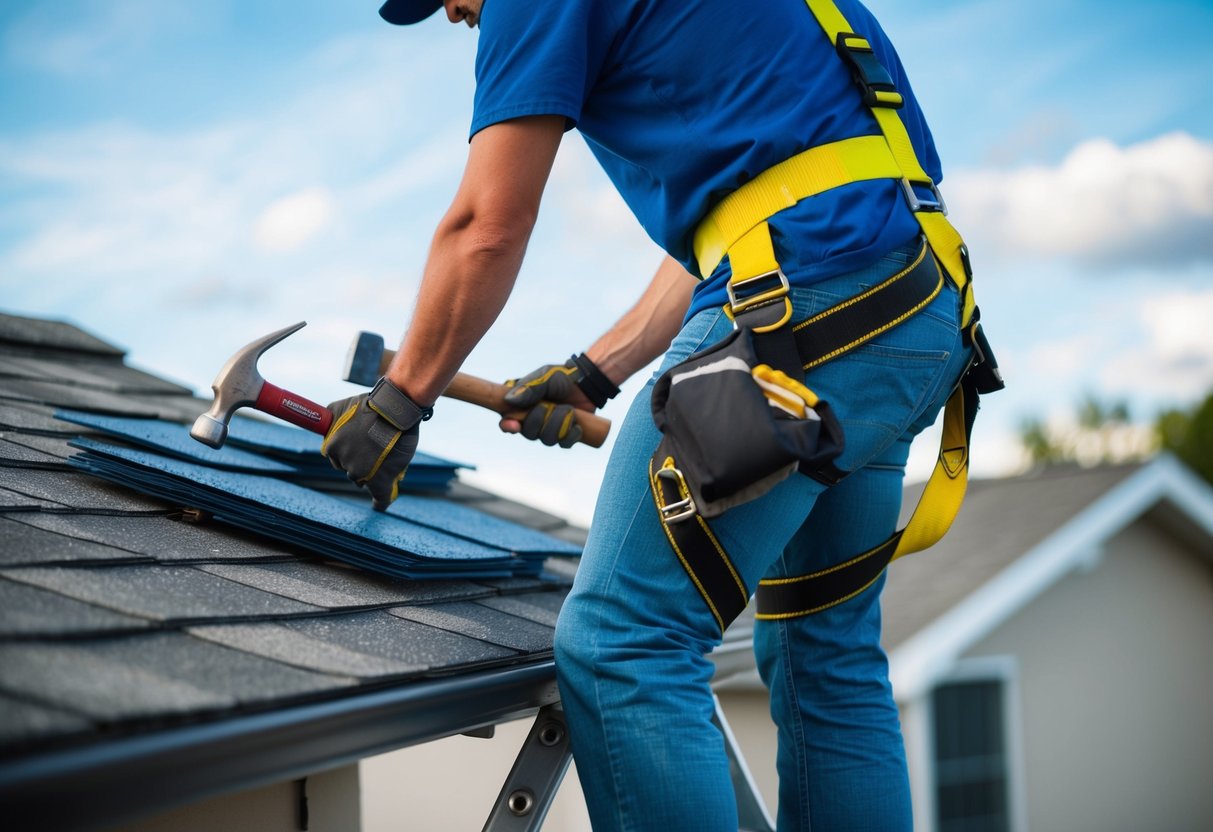DIY Roof Repair: Safeguarding Your Home with Essential Tips and Tools
Characteristics of Roof Shingles
Roof shingles come in numerous types, primarily varying by material and lifespan. Asphalt shingles, known for affordability and widespread availability, typically last around 20 years.
Architectural shingles offer more dimensional texture and longer lifespans, often ranging from 25 to 30 years. Metal shingles provide exceptional longevity, sometimes lasting 50 years or more, and they are lightweight.
Slate shingles offer elegance and can last over a century, but they are heavier and usually more expensive. Each type of shingle affects the roof’s appearance and functionality. Considerations like durability, ease of installation, and cost influence the most suitable choice for any given roof.
Essential Tools for DIY Roof Repair

For successful DIY roof repair, it’s crucial to have the right tools on hand. Safety gear is essential to protect oneself during the repair process, while specific tools are vital for handling shingles and sealants effectively.
Safety Gear and Roofing Harness
Prioritizing safety is the first step in any DIY roof repair project. A roofing harness is a critical piece of equipment that ensures personal safety while working at heights. It typically includes a full-body harness, lanyard, and an anchor point. Without these, the risk of falls and serious injuries increases significantly.
Wearing a durable, non-slip pair of shoes or boots is equally important, as it provides additional grip and security on the roof’s surface. Hard hats and gloves also add layers of protection, shielding against accidents and rugged materials. Anyone considering repairs should prioritize acquiring and correctly using these essential safety gear items.
Tools for Repairing Shingles and Sealants
When it comes to repairing shingles, a few specific tools are indispensable. A roofing hammer is essential for driving nails securely, ensuring shingles stay in place. Utility knives assist in trimming shingles to fit tricky areas.
Sealant application requires a caulking gun, which allows for precise distribution of roofing sealant to close gaps or potential leak points. Additionally, a shingle lift can be invaluable, making it easier to transport shingles up to the roof. These tools are vital for efficient and effective repairs. They enable homeowners to tackle shingle replacements and adhesions with confidence.
Addressing Leaks and Water Damage
Maintaining a roof in good repair prevents leaks and minimizes water damage. Taking steps to manage structural risks can protect the home’s integrity and reduce the likelihood of mold growth.
Fixing Leaking Roof Issues
Identifying the source of a leak is the first step to addressing roof issues. Regular inspections during and after heavy rain can reveal problem areas such as damaged shingles or compromised flashing. Repair materials should match existing roof types for consistency and durability. When replacing shingles, removing nails carefully helps avoid further damage. Ensuring proper drainage through cleaned gutters prevents water pooling. Sealing gaps around vents and chimneys with durable sealant enhances protection. Adequate ventilation reduces moisture buildup under the roof.
Preventing Mold and Structural Damage
Water damage can lead to mold growth, posing health risks and compromising air quality. To prevent this, act promptly to dry any wet areas using fans and dehumidifiers. Examining attic spaces for signs of water penetration can indicate areas needing attention. Addressing leaks promptly helps protect the structural integrity of the home. Mold-resistant materials like specific drywall and paints are advisable in vulnerable areas. Regular moisture monitoring aids in preventing mold infestation. Inspections after severe weather events highlight new vulnerabilities, enabling quick action to prevent long-term damage. Prioritizing prevention and swift repair maintains a healthy living environment.



